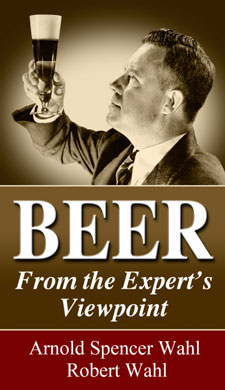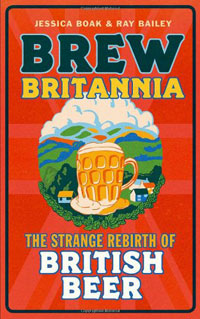 There has been discussion of late about the need to find different ways to write about beer. I could be wrong — happens all the time — but suspect it will be interesting to compare “We Make Beer: Inside the Spirit and Artistry of America’s Craft Brewers” and “The Brewer’s Tale: A History of the World According to Beer” within that context.
There has been discussion of late about the need to find different ways to write about beer. I could be wrong — happens all the time — but suspect it will be interesting to compare “We Make Beer: Inside the Spirit and Artistry of America’s Craft Brewers” and “The Brewer’s Tale: A History of the World According to Beer” within that context.
I’ve read the first, and hope to cuddle up with the second before long. In the meantime, I emailed “We Make Beer” author Sean Lewis a few questions. These may be of more interest to me than you, and probably make more sense after reading the book. So a bit of background. Lewis is 30 years old, from Southern California and a sportswriter and beer columnist by trade, currently at the Santa Barbara News Press.
Lewis was living in Massachusetts when the story began with Blue Hills Brewery. He traveled across the country in writing the book, which includes interviews with principals at much better known breweries, such as Jim Koch at Boston Beer Co., Ken Grossman at Sierra Nevada Brewing, and Matt Brynildson at Firestone Walker Brewing. He got to know them well enough that he felt comfortable writing about them by first name — which is one of the things I asked him about.
Are you your target audience? Are you craft beer’s target audience?
I’m part of my target audience, but I’m also a real big nerd and I definitely wanted to make sure that the book wasn’t overloaded with technical terms so that it could be accessible for someone with just a casual interest in beer. I probably fall smack dab in the middle of craft beer’s target demographic. I don’t want to over generalize a whole subset of beer consumers, but I meet a lot of people that are a lot like me in this industry.
Did it start out to be a different book than it ended up? Did Blue Hills end up playing a bigger role, a smaller role, the same role?
Amazingly, just about the only thing that remained constant from my original intention for the book and the end result was the role of Blue Hills and Andris Veidis. I wanted to have a familiar character for my readers to go back to. I felt if I could relate the larger themes I was trying to convey to the daily operations of one particular brewery then it would only make my points that much clearer.
What changed greatly from the initial concept was my role in the narrative. The book began as a sort of road story, but much of that faded away as the team at St. Martin’s Press and I worked with the text. My background is in journalism, and the book was much stronger in the parts that were more journalistic.
Did you pick out the stories in the book or did they pick you out?
I had an idea of what I was looking for, but most of the stories took on lives of their own. And that’s a good thing — I don’t think it’s the best journalistic practice to go into a story assuming you already know what it is.
Is this a big picture book or a small picture book?
It’s a big picture book illustrated by many small pictures.
What changed from start to finish?
In terms of the structure of the narrative, almost everything. It went from an intimate story of my brother and I driving across the country drinking beer to a story of brewers making beer. But in terms of the themes I thought I could convey, things like craftsmanship, community and collaboration, those remained the same.
Why did you refer to the people you interviewed by first name on second reference rather than by last name?
I wanted to really connect my readers to the brewers. I originally had it written with the brewers’ last names, but it felt stiff and formal — which beer never is. I really hoped to capture the voices of the brewers I spoke with, and I feel that using the first names helped accomplish that better. Granted, there were times where using the last name seemed more appropriate as well, but in the spirit of uniformity I decided that using only first names was better than using either only last names or some blend of the two.
What were the “holy shit” things you learned?
Holy shit, pro brewers can handle their booze. Apart from that, I was amazed at how open and accessible everyone was. It was easier for me to get an interview with the heads of the largest craft breweries in the country than it would be to speak with the commissioner of Southern California high school football. I’m constantly impressed by how few brewers have their heads up their own asses because it’s so common everywhere else.



